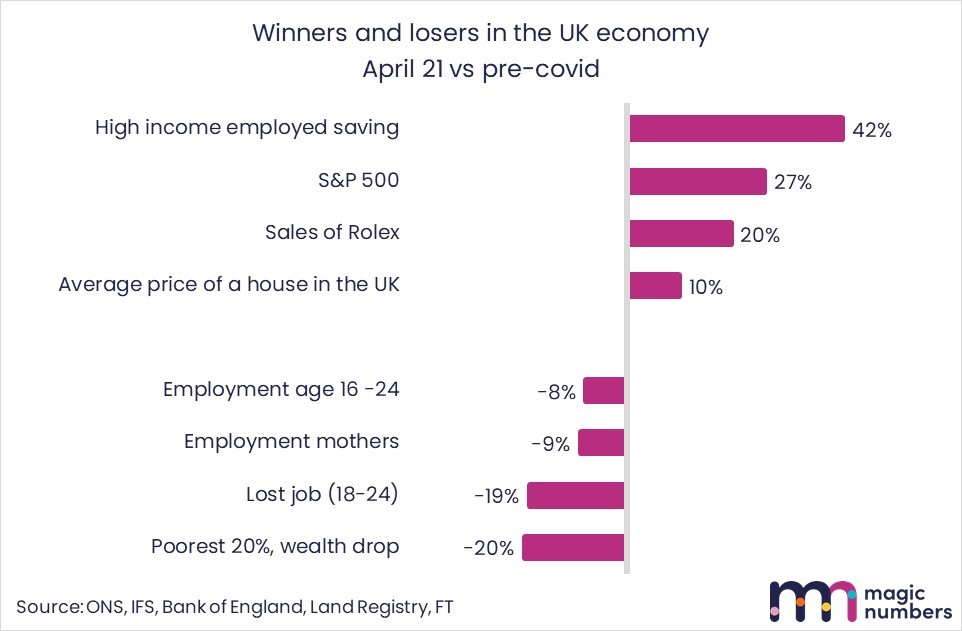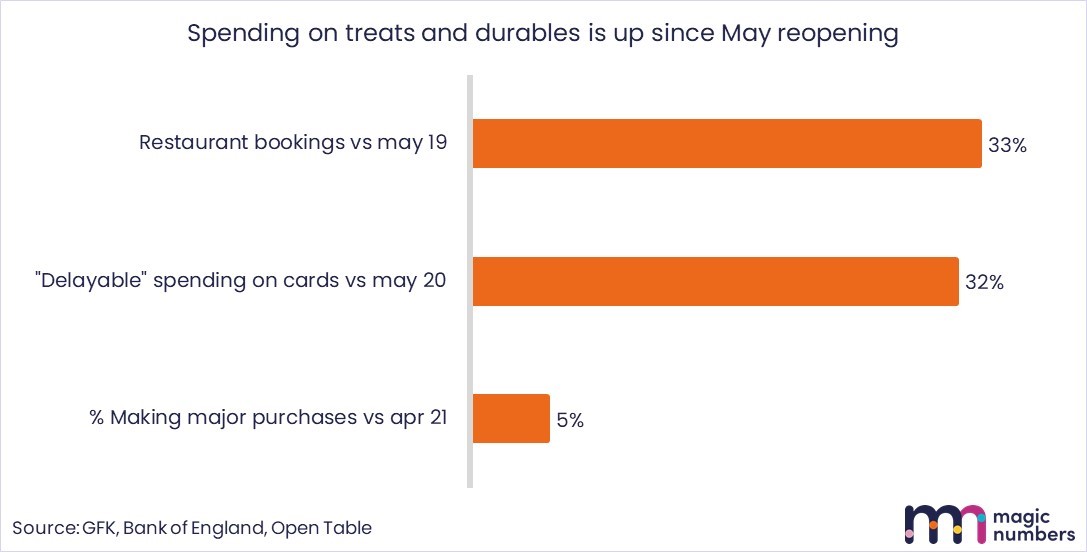We’re past the worst of the covid-19 crisis. Not completely out of the woods, but the trees are definitely thinning.
And while we were in the depths of it, two roads diverged, so that different people are now coming out on different paths. Some are much worse off; others are actually fitter financially than they were before.
That’s why economists are calling the recovery “k-shaped”. Categories and consumers on the top arm of the k are bouncing back, they have money to spend. Others, on the bottom arm, are struggling to make ends meet and will continue to.
And this matters for marketers. Effective marketing depends on reaching the right people at the right time with the right message. In 2021 and 2022 that means knowing which arm of the K potential buyers are in, and adjusting strategies accordingly.
There are good opportunities in the top arm of the k, as people reward themselves for surviving the dark times. On the other hand, advertising aimed at those in the bottom arm needs to be very sensitive, and even then, it may not pay back in the short term.
The economic recovery is already here, it’s just not very evenly distributed
When taken as a whole, the data reveals a UK economy in good health. The chart below shows economic measures relevant to marketers and compares data from April and May 2021 to the period just before the pandemic. It shows that both spending and hiring are significantly up from what was normal before covid.






